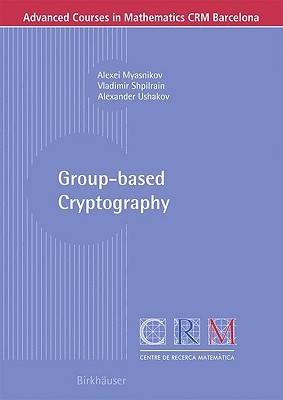
- We will send in 10–14 business days.
- Author: Alexei Myasnikov
- Publisher: Birkhäuser
- Year: 2008
- Pages: 183
- ISBN-10: 3764388269
- ISBN-13: 9783764388263
- Format: 17 x 23.6 x 1.3 cm, minkšti viršeliai
- Language: English
- SAVE -10% with code: EXTRA
Reviews
Description
This book is about relations between three di?erent areas of mathematics and theoreticalcomputer science: combinatorialgroup theory, cryptography, and c- plexity theory. We explorehownon-commutative(in?nite) groups, which arety- callystudiedincombinatorialgrouptheory, canbeusedinpublickeycryptography. We also show that there is a remarkable feedback from cryptography to com- natorial group theory because some of the problems motivated by cryptography appear to be new to group theory, and they open many interesting research - enues within group theory. Then, we employ complexity theory, notably generic case complexity of algorithms, for cryptanalysisof various cryptographicprotocols based on in?nite groups. We also use the ideas and machinery from the theory of generic case complexity to study asymptotically dominant properties of some in?nite groups that have been used in public key cryptography so far. It turns out that for a relevant cryptographic scheme to be secure, it is essential that keys are selected from a "very small" (relative to the whole group, say) subset rather than from the whole group. Detecting these subsets ("black holes") for a part- ular cryptographic scheme is usually a very challenging problem, but it holds the keyto creatingsecurecryptographicprimitives basedonin?nite non-commutative groups. The book isbased onlecture notesfor the Advanced Courseon Group-Based CryptographyheldattheCRM, BarcelonainMay2007. Itisagreatpleasureforus to thank Manuel Castellet, the HonoraryDirector of the CRM, for supporting the idea of this Advanced Course. We are also grateful to the current CRM Director, JoaquimBruna, and to the friendly CRM sta?, especially Mrs. N. PortetandMrs. N. Hern´ andez, for their help in running the Advanced Course and in preparing the lecture notes.
EXTRA 10 % discount with code: EXTRA
The promotion ends in 23d.19:08:11
The discount code is valid when purchasing from 10 €. Discounts do not stack.
- Author: Alexei Myasnikov
- Publisher: Birkhäuser
- Year: 2008
- Pages: 183
- ISBN-10: 3764388269
- ISBN-13: 9783764388263
- Format: 17 x 23.6 x 1.3 cm, minkšti viršeliai
- Language: English English
This book is about relations between three di?erent areas of mathematics and theoreticalcomputer science: combinatorialgroup theory, cryptography, and c- plexity theory. We explorehownon-commutative(in?nite) groups, which arety- callystudiedincombinatorialgrouptheory, canbeusedinpublickeycryptography. We also show that there is a remarkable feedback from cryptography to com- natorial group theory because some of the problems motivated by cryptography appear to be new to group theory, and they open many interesting research - enues within group theory. Then, we employ complexity theory, notably generic case complexity of algorithms, for cryptanalysisof various cryptographicprotocols based on in?nite groups. We also use the ideas and machinery from the theory of generic case complexity to study asymptotically dominant properties of some in?nite groups that have been used in public key cryptography so far. It turns out that for a relevant cryptographic scheme to be secure, it is essential that keys are selected from a "very small" (relative to the whole group, say) subset rather than from the whole group. Detecting these subsets ("black holes") for a part- ular cryptographic scheme is usually a very challenging problem, but it holds the keyto creatingsecurecryptographicprimitives basedonin?nite non-commutative groups. The book isbased onlecture notesfor the Advanced Courseon Group-Based CryptographyheldattheCRM, BarcelonainMay2007. Itisagreatpleasureforus to thank Manuel Castellet, the HonoraryDirector of the CRM, for supporting the idea of this Advanced Course. We are also grateful to the current CRM Director, JoaquimBruna, and to the friendly CRM sta?, especially Mrs. N. PortetandMrs. N. Hern´ andez, for their help in running the Advanced Course and in preparing the lecture notes.


Reviews